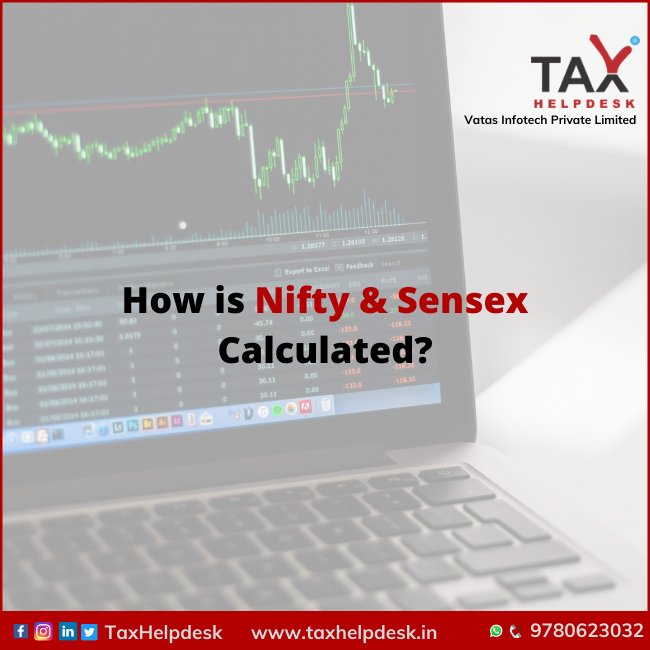In our previous blog, we have already explained the meaning, scope and differences of Nifty and Sensex. In this blog, we have explained how to calculate Nifty and Sensex!
Basics of Nifty
Base Period: 3rd November, 1955
Capital Base: Rs. 2.06 trillion
Base Number: 1000
The Nifty calculation takes place as per the free-float market capitalisation weighted methodology. Thus, it represents the total market value of the constituents in Nifty in relation to the base period. Companies included for its calculation must be featured in the Nifty 100 index as well. Apart from this, Nifty 50 constituents must have a 0.5% or less average impact cost for a period of 6 months for a portfolio of Rs.10 crore for 90% of the observation.
How to calculate Nifty?
To calculate the Nifty index,
Firstly, one needs to derive the market capitalisation of the constituents by multiplying the number of shares with their prices.
Market capitalisation = Outstanding Shares x Share Price
Secondly, to determine the free-float market capitalisation, one needs to multiply the Investable Weight Factor (IWF) with the original market capitalisation.
Free-float market capitalisation = Market capitalisation x IWF
IWF represents the proportion of shares that investors can freely trade in the stock market. In other words, it is the percentage of shares not held by directors or promoters of a company.
Thirdly, one needs to calculate the index value by dividing the current market value by base market value and then multiplying it by the base index value.
Index value = (Current market value / Base market capital) x 1000
This index denotes the returns an investor can earn if they invest in that specific portfolio.
Also Read: How to treat income from transfer of shares?
Sensex Basics
Base Period: 1978 – 1979
Capital Base: Not applicable
Base Number: 100
Sensex follows a methodology similar to that of Nifty. Sensex is calculated based on a free-float market capitalisation method. Therefore, similar to Nifty, this index is also reflective of the total market value of the 30 constituents in relation to its base period.
Also Read: How to determine your Net Worth?
In addition to this, companies that are included in the calculation of this index must be existing participants in the top 100 list of BSE per market capitalisation. Moreover, each constituent must have a weight regarding free-float, that is 0.5% of said index.
Alongside these criteria, a company’s stocks should have a trading history of at least 1 year and must have traded on every trading day of that period to qualify as a constituent.
Calculation of Sensex
It is first required to calculate the market capitalisation of each company applying the same formula as mentioned above.
Secondly, to calculate the free-floating market capitalisation one needs to multiply the derived market capitalisation with a free-float factor.
Free-float market capitalisation = Market capitalisation x free-float factor
Lastly, to compute Sensex, the free-float market capitalisation of those 30 companies shall be divided by the index divisor of 100.
Index value = (Free-float market capitalisation / Index divisor) x 100
This index divisor is what establishes the relationship between the base period and the current period. Furthermore, that divisor also facilitates comparison across different periods.
Similar to Nifty, Sensex also reflects the returns one could earn by investing in that portfolio. Therefore, investors could weigh Sensex vs Nifty returns.
If you have any suggestions/feedback, then please drop us a message in the chat box. For more updates on Taxation, Financial and Legal matters, join our group on WhatsApp, channel on Telegram or follow us on Facebook, Instagram, Twitter and Linkedin!
The views of the author are personal. Kindly take advice of our experts before calculating!



Pingback: Know the Differences between Sensex and Nifty | TaxHelpdesk